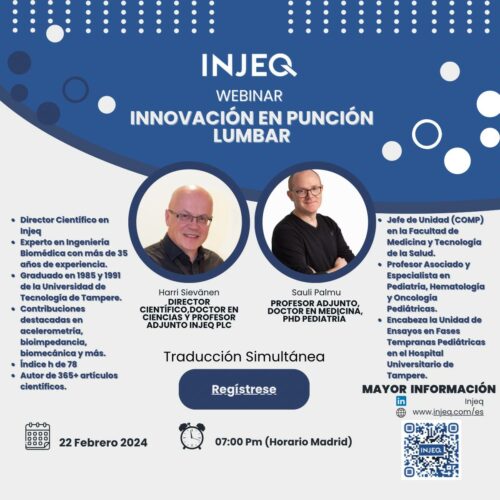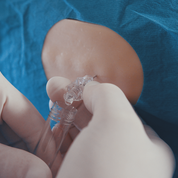Our story begins with the vision of a needle that can help doctors identify the correct puncture position.
Physicians must, in certain cases, perform what is referred to as a blind puncture on a patient, meaning the needle’s final target cannot be seen. Among such challenging procedures are spinal fluid punctures, which must avoid the surrounding nerves and blood vessels.
It is a task that demands millimeter precision, and the practitioner can never be entirely sure where the tip of the needle is.
Inaccurate punctures can cause not only pain, but also significant damage and, in the worst-case scenario, even the death of the patient. What if you had a needle with a tip that could tell you exactly where it is?
In 2003, Katja Paassilta (DDS, MSc Eng), Riitta Seppänen-Kaijansinkko (MD, DDS, PhD, Prof) and Jari Hyttinen(DSc Tech, Prof) began to envision a solution to this seemingly simple question.
Thanks to their interdisciplinary backgrounds in the fields of medicine and technology, they knew that various tissues and anatomical structures conduct electricity at different frequencies in a slightly different way. This electrical conductivity in human tissue is called bioimpedance. This gave rise to the question: Could bioimpedance be used to identify when the tip of a needle is in the right location for a puncture?
Based on this revelation and more than fifteen years of groundbreaking R&D work, the Injeq smart needle was born. It is the first injection needle in the world that can reliably identify the correct puncture point.
The first smart needle application to be commercialized was designed in collaboration with oncologists and pediatricians particularly for the treatment of childhood leukemia. During the treatment of leukemia, dozens of lumbar punctures (spinal taps) are performed on the patient in order to take cerebrospinal fluid samples and to inject chemotherapy drugs into the spinal canal to kill cancer cells.
The punctures are challenging, and it is important to ensure that the needle is not inserted too far, where it might hit a blood vessel. If that does happen, there is a risk of bleeding that allows cancer cells in the blood to enter the spinal canal and the central nervous system. Every puncture involves significant risks for the health of the small patient. The smart needle’s ability to identify spinal fluid has been studied in several clinical trials. A clinical investigation that aims to demonstrate the needle’s first-puncture success rate is currently on-going.
Injeq’s smart needle is designed to be as easy and simple to use as possible in clinical use by physicians. When it reaches the spinal canal, the tip of the needle identifies the spinal fluid. The measurement device attached to it then alerts the physician with an audio signal, thereby contributing significantly to this so-called blind puncture procedure’s successful outcome.
Injeq brings a new standard of safety to punctures – both for patients and physicians.



